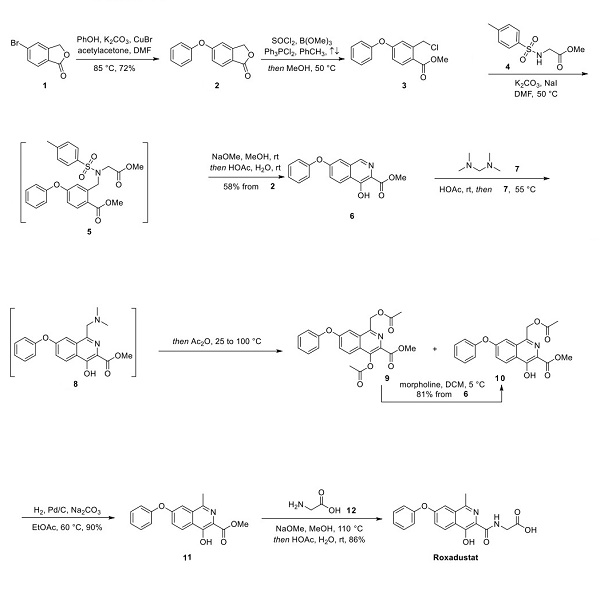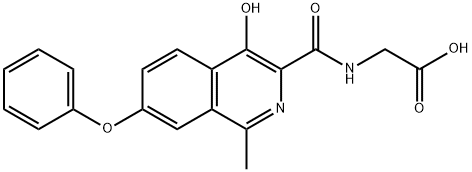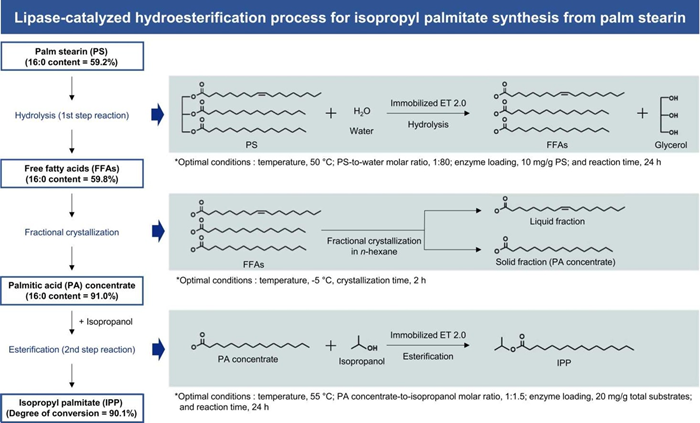An orally active HIF-PHD inhibitor: Roxadustat
Overview
Roxadustat (FG-4592, ASP1517, Anatomical Therapeutic Classification (ATC) code B03XA05) is an orally administered small molecule drug that prevents the enzymatic degradation of HIF-1α by inhibiting the PHD enzymes[1]. As an orally active hypoxia-inducible factor prolyl hydroxylase (HIF-PHD) inhibitor, it treats anemia in patients with dialysis-dependent chronic kidney disease (CKD).
Uses
The drug was developed by FibroGen in collaboration with Astellas and AstraZeneca and was approved in China in December 2018 as a first-in-class potent HIF-PHD inhibitor. HIF-PHD enzymes regulate the degradation of transcription factors in the HIF family under normal oxygen conditions. Inhibition of these enzymes stabilizes HIF and enhances its activity, increasing endogenous erythropoietin (EPO) production and allowing erythropoiesis to occur. The drug also increases iron bioavailability by suppressing peptide hormone hepcidin levels, thus ameliorating anemia by boosting the body's natural oxygen-sensing and response system without requiring intravenous iron supplementation. Roxadustat can also be prescribed to patients who use hemodialysis or peritoneal dialysis.
Synthetic method
FibroGen reported the first small-scale synthesis of roxadustat in 2004, and in 2014 this same organization devised a robust kilogram scale route depicted in below[2]. The nine-step synthetic sequence commenced with 5-bromophthalide 1, which was converted to 5-phenoxy phthalide 2 via a modified Ullman-type coupling. The reaction was performed on an 85 kg scale. The γ-lactone 2 was opened to furnish an acid chloride intermediate, which delivered methyl ester 3 upon treatment with MeOH. Substitution of benzyl chloride 3 with p-toluene sulfonyl glycine methyl ester (4) was carried out under Finkelstein conditions to produce intermediate 5, which then underwent base-mediated cyclization and subsequent aromatization to produce isoquinoline 6 in 58% yield from compound 2. Regiospecific Mannich aminomethylation of isoquinoline 6 was achieved with bis(dimethylamino)-methane 7 in acetic acid to furnish dimethylaminomethyl intermediate 8, which was subsequently activated with acetic anhydride to replace the dimethylamino group with an acetoxy moiety. The reaction yielded the intended isoquinolinol 10. The undesired bis-acetoxy adduct 9 could be recycled to generate additional compound 10 upon treatment with morpholine. Reduction of the acetoxy group under hydrogenation conditions yielded 11, and this intermediate was converted to roxadustat via treatment with glycine 12 and sodium methoxide.

Clinical Toxicities
In a meta-analysis of 30 studies comprising 13,146 patients, more adverse events were reported with roxadustat than with placebo, such as diarrhea (RR 1.21, 95% CI 1.00–1.47), nausea (RR 1.46, 95% CI 1.09–1.97), edema (RR 1.32, 95% CI 1.01–1.59), hyperkalemia (RR 1.27, 95% CI 1.05–1.54), and arterial hypertension (RR 1.34, 95% CI 1.02–1.76). With roxadustat, a rise in serum potassium and a decrease in blood bicarbonate have been reported[1]. Compared with exogenous ESA, roxadustat was associated with more frequent adverse events such as vomiting (RR 1.30, 95% CI 1.02–1.65), headache (RR 1.27, 95% CI 1.05–1.53), and thrombosis (RR 1.31, 95% CI 1.05–1.63). Roxadustat might unfavorably lead to the growth of renal cysts in autosomal dominant polycystic kidney disease (ADPKD) because the HIF pathway appears to be involved in cyst progression. Roxadustat led to reduced thyroid-stimulating hormone levels in a multimorbid hemodialysis patient, but, to date, the mechanism and clinical implications are unclear.
References
[1] David Czock, Frieder Keller. “Clinical Pharmacokinetics and Pharmacodynamics of Roxadustat.” Clinical Pharmacokinetics (2022): 347–362.
[2] Andrew C. Flick. “Synthetic Approaches to New Drugs Approved during 2018.” Journal of Medicinal Chemistry 63 19 (2020): 10652–10704.
You may like
Related articles And Qustion
See also
Lastest Price from Roxadustat manufacturers

US $2.00-6.00/KG2025-07-28
- CAS:
- 808118-40-3
- Min. Order:
- 1KG
- Purity:
- 99%
- Supply Ability:
- g-kg-ton

US $5.00-0.50/KG2025-05-30
- CAS:
- 808118-40-3
- Min. Order:
- 1KG
- Purity:
- 99% hplc
- Supply Ability:
- 500TONS



